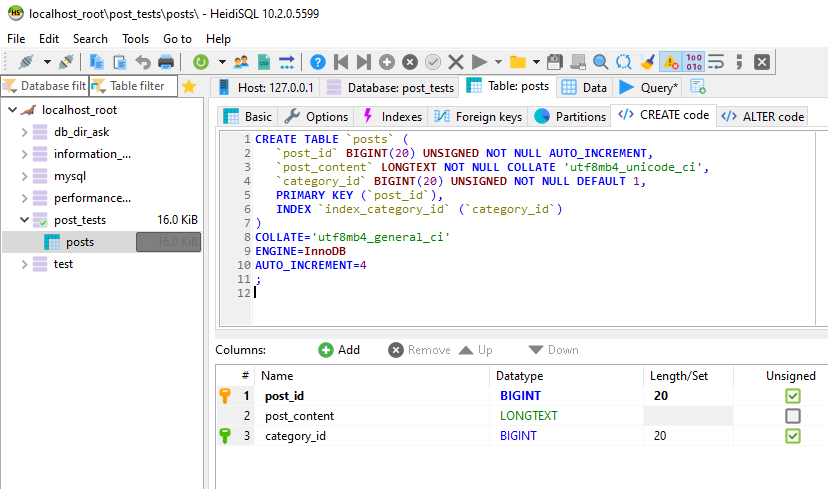

- #Mysql add column to table after another column how to
- #Mysql add column to table after another column code
- #Mysql add column to table after another column password
Here we will see how to work with SQLAlchemy ORM. So, orion_ could be the name (from the name column in the owners table) of this pet's owner.Īnd the ORM will do all the work to get the information from the corresponding table owners when you try to access it from your pet object.Ĭommon ORMs are for example: Django-ORM (part of the Django framework), SQLAlchemy ORM (part of SQLAlchemy, independent of framework) and Peewee (independent of framework), among others. This way, you could also have an attribute orion_cat.owner and the owner would contain the data for this pet's owner, taken from the table owners. These ORMs also have tools to make the connections or relations between tables or entities. And the value of that attribute could be, e.g. With an ORM, you normally create a class that represents a table in a SQL database, each attribute of the class represents a column, with a name and a type.įor example a class Pet could represent a SQL table pets.Īnd each instance object of that class represents a row in the database.įor example an object orion_cat (an instance of Pet) could have an attribute orion_cat.type, for the column type.
#Mysql add column to table after another column code
ORMs ¶įastAPI works with any database and any style of library to talk to the database.Ī common pattern is to use an "ORM": an "object-relational mapping" library.Īn ORM has tools to convert (" map") between objects in code and database tables (" relations"). The FastAPI specific code is as small as always. Notice that most of the code is the standard SQLAlchemy code you would use with any framework.
#Mysql add column to table after another column password
The column will be defined as a varchar(25) data type that allows NULL values.OAuth2 with Password (and hashing), Bearer with JWT tokensĬreate SQLAlchemy models from the Base classĬreate Pydantic models / schemas for reading / returning This MariaDB ALTER TABLE example will rename the column called host_name to hname. Let's look at an example that shows how to rename a column in a MariaDB table using the ALTER TABLE statement. It tells MariaDB where in the table to position the column, if you wish to change its position. You must specify the column definition when renaming the column, even if it does not change. column_definition The datatype and definition of the column (NULL or NOT NULL, etc). table_name The name of the table to modify. The syntax to rename a column in a table in MariaDB (using the ALTER TABLE statement) is: ALTER TABLE table_name The server_name column will be modified to a varchar(30) NOT NULL column (and will not change position in the websites table definition, as there is no FIRST | AFTER specified). The host_name field will be changed to a varchar(45) column that allows NULL values and will appear after the website_id column in the table. This ALTER TABLE example will modify two columns to the websites table - host_name and server_name. Let's look at an example that shows how to modify multiple columns in a MariaDB table using the ALTER TABLE statement. column_definition The modified datatype and definition of the column (NULL or NOT NULL, etc). column_name The name of the column to modify in the table. The syntax to modify multiple columns in a table in MariaDB (using the ALTER TABLE statement) is: ALTER TABLE table_name The creation_date column will be created as a date column and will appear at the end of the table. The host_name field will be created as a varchar(20) column that allows NULL values and will appear after the server_name column in the table. This ALTER TABLE example will add two columns to the websites table - host_name and creation_date. Let's look at an example that shows how to add multiple columns in a MariaDB table using the ALTER TABLE statement. If this parameter is not specified, the new column will be added to the end of the table. It tells MariaDB where in the table to create the column. new_column_name The name of the new column to add to the table.

The syntax to add multiple columns in a table in MariaDB (using the ALTER TABLE statement) is: ALTER TABLE table_name


 0 kommentar(er)
0 kommentar(er)
